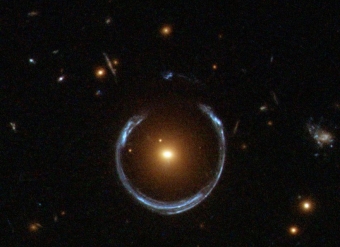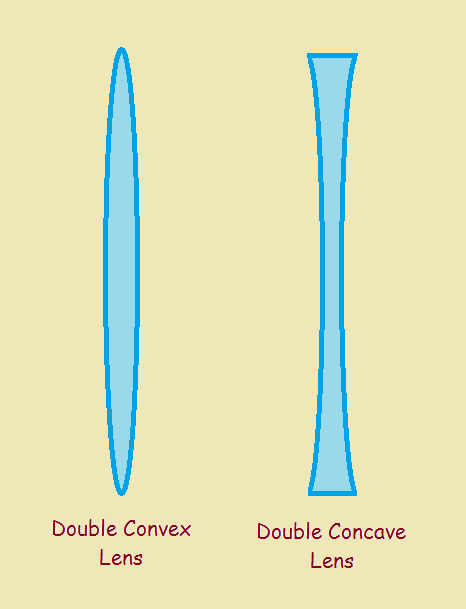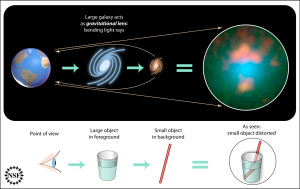
Gravitational lenses? What are they? Why are they called that? How do they behave?
If one doesn’t limit science to its most basic level, it can be surprising what he can find. Take lenses for example. Probably as a child you took a magnifying lens outdoors and burned some leaves or paper.
Once you realized you had to focus the light to as fine and bright a point as you could, you spotted the wisp of smoke that trails upward and is the first sign of success. Shortly thereafter, you saw signs of a flame.

Your lens was clear glass. It was double convex, meaning both surfaces of the lens bowed outward rather than inward (concave).
Ever Heard of a Rubber Lens?
“Come on,” you say. “A rubber lens?” Quite so, quirky as that sounds. Just as ordinary glass is transparent to visible light, hard rubber is transparent to infrared “light” or radiation. As the book, “Photography by Infrared – Its Principles and Applications,” by Walter Clark (2007), says, “Certain kinds of hard rubber and plastics are also very transparent to the infrared. In fact, hard rubber is often deliberately used to screen off the visible light from a lamp and let through the infrared.”
In fact, for college physics class, our instructor, Paul Kaczmarczik, demonstrated focusing the heat of a match to ignite another match at a distance, using a double convex rubber lens.
Think BIG – Gravitational Lenses
But shortly after I was employed by the National Radio Astronomy Observatory in Charlottesville, Virginia, I came to realize there is a form of lens that is ever so much larger – a gravitational lens. Imagine you wish to look at an extremely object, beyond a galaxy that is between you and the object, though light can pass through.

In fact, the light that does pass through experiences a bending from its ordinary path due to the gravitational field of the galaxy. This bending is somewhat similar to (the same idea as, anyway) what happens when light passes through a glass lens.
There is a difference: light tends to focus, not toward a central point, but outward, in the form of a ring, called the Einstein ring. Modern astronomers have powerful computational techniques that make these images useful in their studies. If the degree of lensing is large, it can reveal the quantity of “dark matter” in the foreground galaxy.
Note: You might also enjoy Characteristics of a High Mass Star
References:
